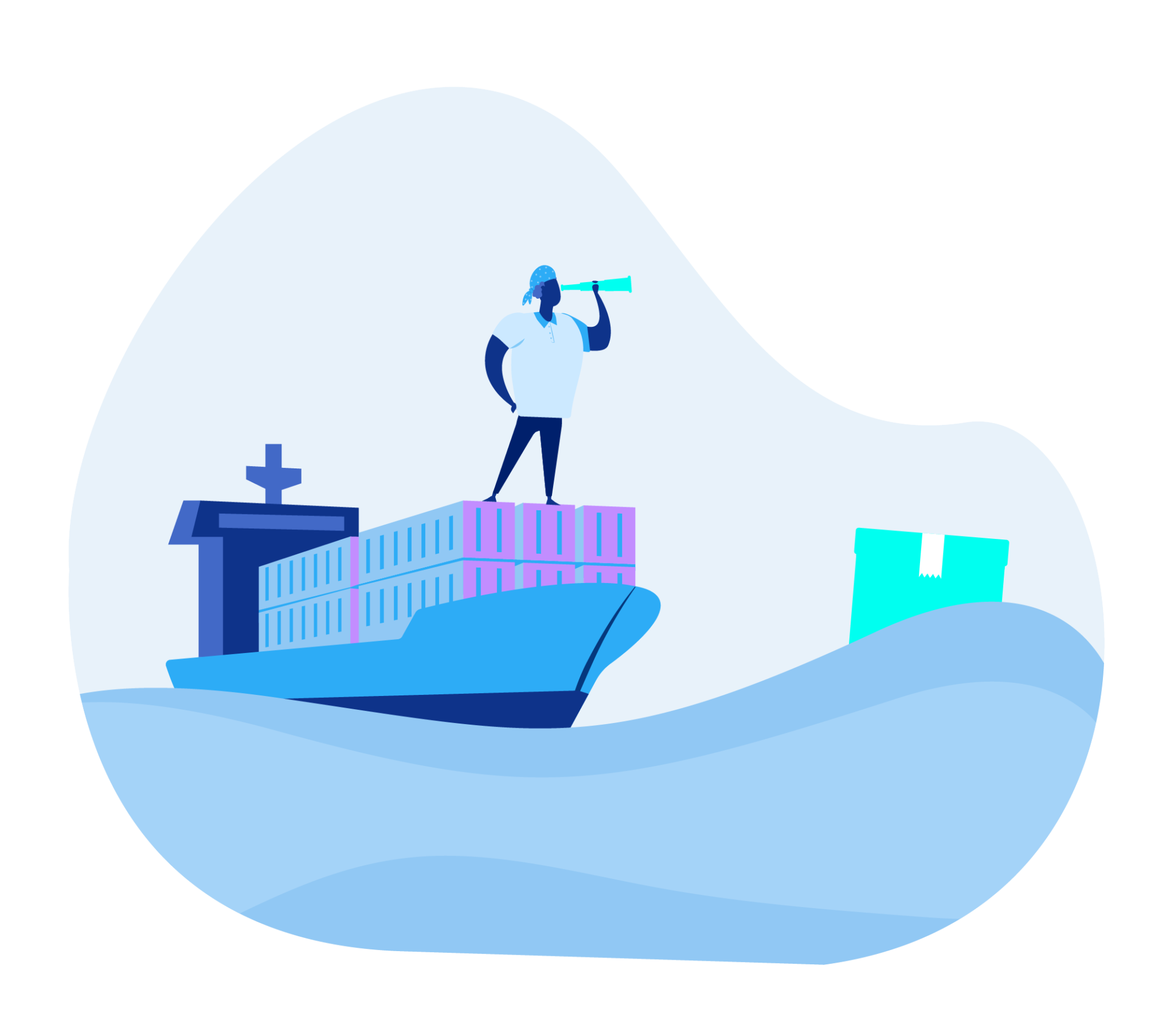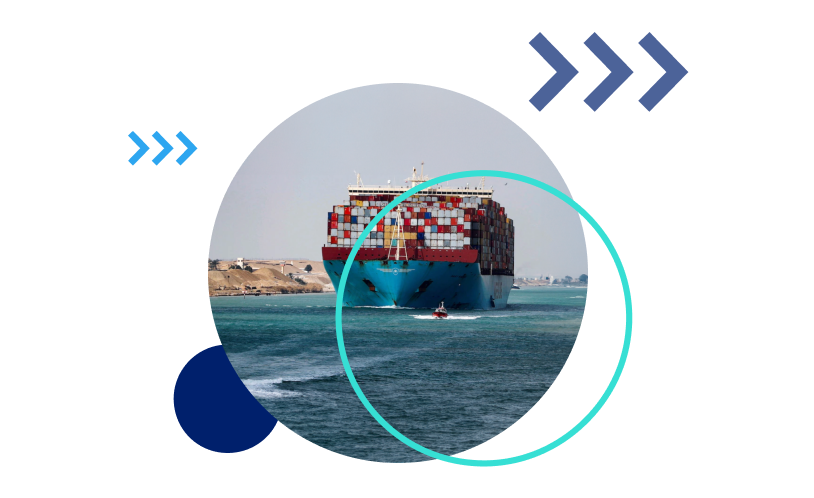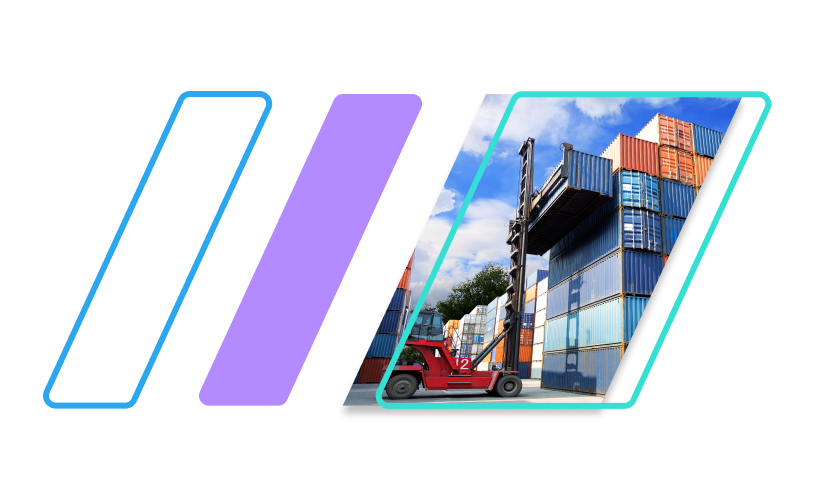Shipping during COVID-19
For many SMBs, navigating the choppy waters of international freight has been difficult this past year. As a freight booking platform, we wanted to hear how the current market is affecting our users.
To get a better understanding of the impact on small business importers and exporters, we conducted surveys and interviews from December 2020 through June 2021.
We asked and a lot of you answered.
Over 1800 of you shared similar issues and experiences across four separate surveys.
This report summarizes the data, addresses the current state of e-commerce and ocean freight, and delves into some of the main challenges facing importers and exporters. These include supply chain disruptions, climbing freight costs, and volatile transit times.
We’ll also look at some ways importers and exporters are mitigating these challenges and offer some actionable tips – from SMBs, for SMBs.
These insights will give you more knowledge and control over your business decisions and help you ship smoother.
Looking for live quotes from vetted providers?
Ecommerce supply chain challenges & international shipping solutions
With so many people ordering goods from home, e-commerce and online SMB sellers experienced a boost and savvy brick and mortar businesses pivoted to digital.
In just a few months, the COVID-19 pandemic shook up supply chains and propelled e-commerce penetration by up to a decade (McKinsey).
E-commerce penetration (Federal Reserve Bank of St. Louis) in the US increased by 49% from May to July, 2020 and the number of new small businesses (US Census Bureau) opened in 2020 increased by 83%.
Many small e-commerce businesses, including 60% of Freightos.com survey respondents, source their products overseas and ship these goods by international freight.
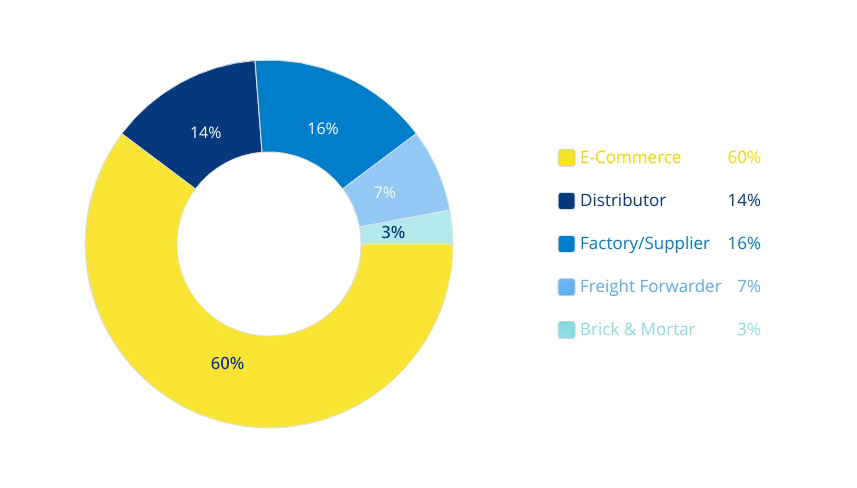
Supply chain disruption
Early in the pandemic, the global economy ground to a halt as China shut down factories and ports. But with the country reopening in the summer and consumers around the world shifting to online shopping, high volumes and tight capacity triggered an early peak season that hasn’t ended yet.
The increase in demand for ocean imports combined with disruptions caused by the pandemic created a capacity crunch.
For 94% of the SMB importers and exporters that completed our surveys, this meant challenges in their supply chain.
While the biggest supply chain challenge reported was high costs, respondents noted that delays, and customs, tariffs, and inventory management also posed a challenge over the past year.
In January 2021, we sent out an additional survey asking how Freightos.com users were mitigating supply chain disruptions and associated challenges. Of those that responded, 34% reported they had raised product prices and 26% said they had to reduce their margins.
We asked again in June and found that these numbers had increased significantly, with 46% of respondents raising product prices and 32% reducing margins.
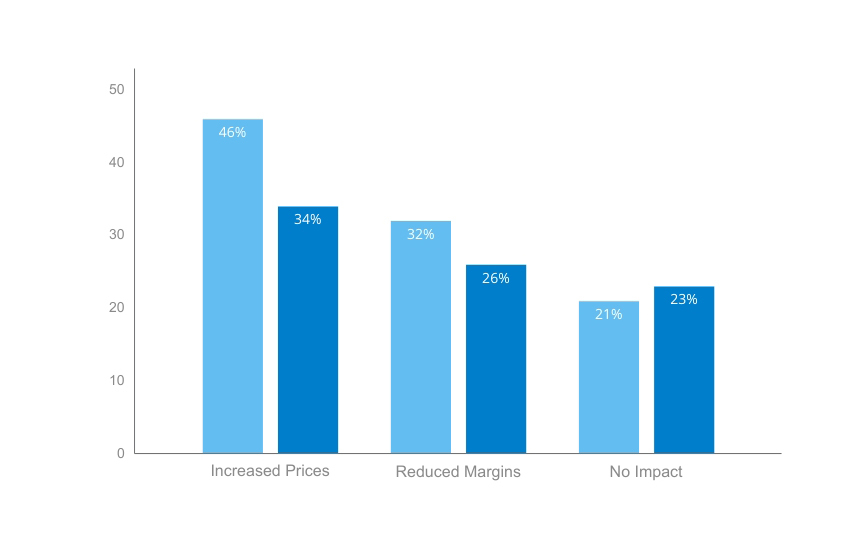
Keeping your goods moving can be tricky these days, but one way to hedge your bets is to diversify modes and lanes. Compare quotes on less congested lanes and consider air freight for smaller and lighter shipments. This can ensure that even if some of your goods are held up or subject to added costs, others may arrive more or less on time and on budget.
Higher (and higher) rates
Rates have more than tripled over the past year.
Over half of those surveyed who said they experienced supply chain disruptions specified that higher costs had the most impact on their business, making this the most common challenge facing respondents.
This reflects what’s been going on in the market. Regular peak season cycles haven’t occurred since the beginning of the pandemic. Instead, rates have been increasing continuously. Plus, getting goods on board has often meant paying premiums in addition to the high rates.
These conditions have pushed some importers and exporters to air cargo. But increased demand and limited capacity is also pushing up air rates. Air freight rates increased 50% just between February and April 2021.
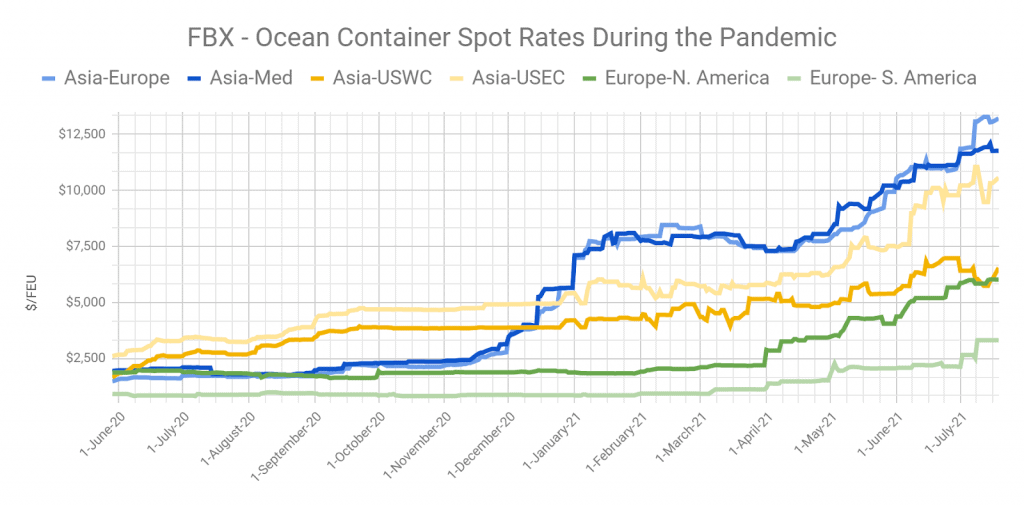
With successive General Rate Increases (GRIs) in ocean freight, elevated air cargo rates, and unanticipated delays and charges, it’s wise to budget for surprises. When calculating the total landed cost of goods, include a buffer for transportation costs.
The rise of LCL
With ocean rates surging and transit times remaining wildly unstable, more importers and exporters are moving to LCL. Which makes sense.
Smaller-volume shippers have historically preferred LCL over FCL. The increase of SMBs shipping goods globally (NY Times) means more smaller-volume shippers – and therefore more LCL – than ever.
This includes Freightos.com survey respondents, 69% of whom ship LCL. Of the importers and exporters who ship LCL, 47% use LCL as their main mode of transport.
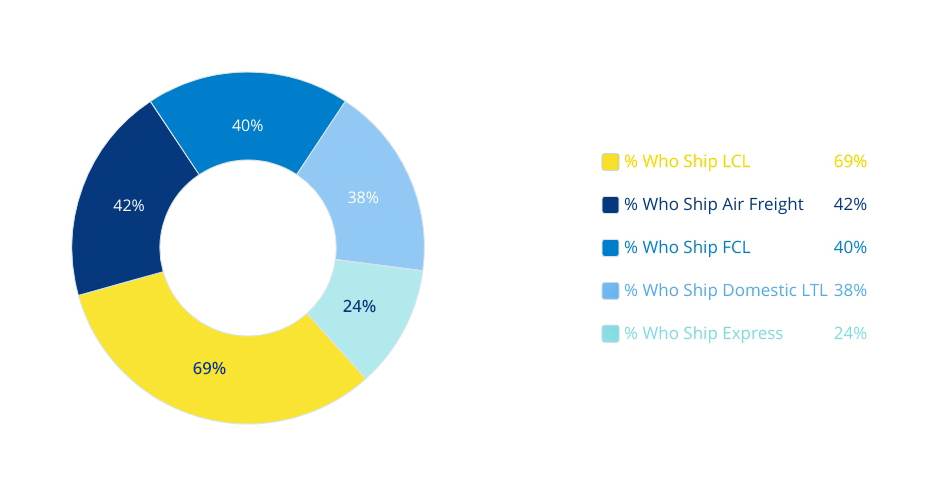
LCL isn’t new to the shipping services landscape, but it has significantly grown in popularity (Journal of Commerce) during the pandemic. If you’re moving smaller quantities of goods, this is a flexible and affordable way to maintain inventory without over purchasing.
Unreliable transit times and COVID shipping delays
Skyrocketing freight costs are a major pain point, but very delayed transit times (Wall Street Journal) are also hurting importers and exporters.
According to our research, 53% of respondents report being affected by the amount of time needed to get goods delivered to their final destination. Factory-to-door delivery times have nearly doubled on major Asian to US lanes and tens of ships have been waiting to get to ports and unload cargo.
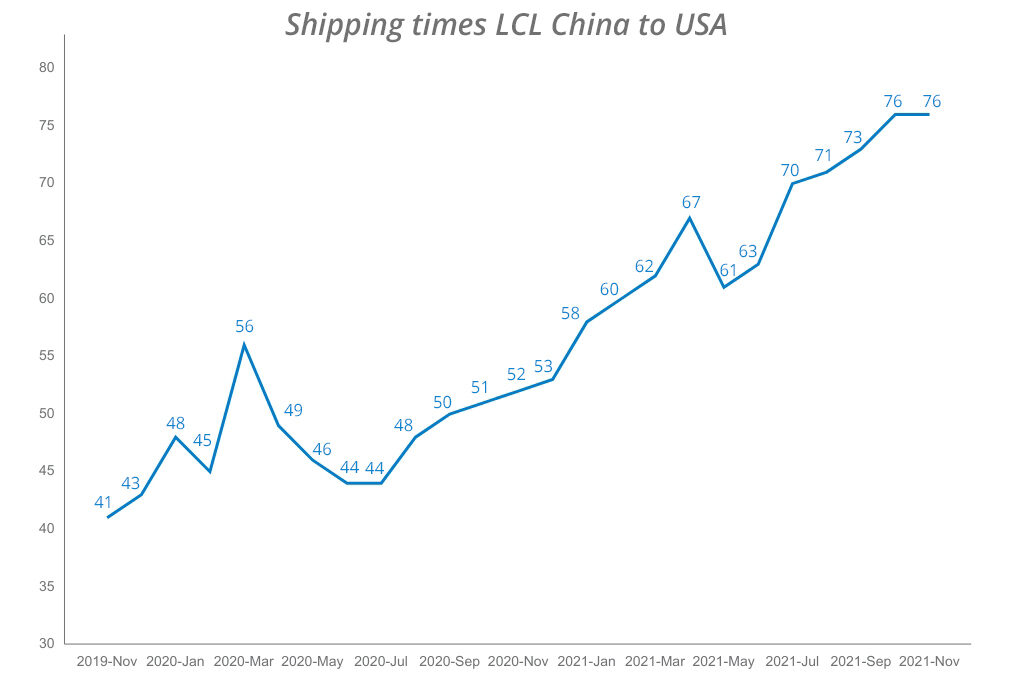
Transit times can change unexpectedly. As frustrating as this is, there is very little carriers or freight forwarders can do. If you are on a tight deadline and want to get your goods on the shelf on time, give yourself a little leeway when booking freight.
In addition, equipment shortages – including containers – means just getting goods on and off ships has become so difficult that importers and exporters are splitting up shipments and changing ports to hedge their bets.
While 60% of searches on Freightos.com from April through November 2020 were for the popular West Coast ports in Los Angeles and Long Beach, by January 2021 this dropped to 48%.
Looking Forward
Since the outset of the pandemic, freight has received more mainstream attention than ever because of the widespread impact of global shipping market conditions.
But this impact has been felt most acutely by SMB importers and exporters.
Thanks to our survey respondents, this research is representative of what many of you have experienced over the course of the pandemic. This unique look behind the curtain delivers insights to help you to ship smoother – despite disruptions, delays, and higher costs.
The past year has been full of changes and challenges, but our users have met them head on with innovation and agility. While we are all adjusting to a new normal, Freightos.com is speaking to importers and exporters, and working closely with logistics providers to offer better service, more stable transit times, and transparent pricing.
Here’s to smoother shipping!

